The Literary Genius of the Structure of Matthew's Gospel
I this video I explore Matthew's ingenious structure of his Gospel.
The Bible is the greatest work of literary genius. And The Bible is Art is a YouTube Channel devoted to explaining this literary art in all its sophistication, elegance, and design.
Patreon: https://www.patreon.com/thebibleisart
website: https://www.thebibleisart.com
email: thisdivineart@gmail.com
twitter: @johnbhiggins
music: Kai Engel, "Coelum" (https://www.kai-engel.com)
| How to Learn to Read the Bible as Literary Art |
Reading Biblical Narrative: An Introductory Guide (https://amzn.to/30LzaRa)
Narrative Art in the Bible (https://amzn.to/30RVGIb)
The Art of Biblical Narrative (https://amzn.to/3aDrIfk)
Old Testament Narrative: A Guide to Interpretation (https://amzn.to/38rcE2C)
The Poetics of Biblical Narrative (https://amzn.to/2Gh4cqE)
| Literary Structure |
Literary Structure of the Old Testament (https://amzn.to/30Jdm8X)
Style And Structure In Biblical Hebrew Narrative (https://amzn.to/2RDTTlQ)
| Genesis |
Creation: The Story of Beginnings - Grossman (https://amzn.to/2GlPwq9)
Abram to Abraham: A Literary Analysis of the Abraham Narrative - Grossman (https://amzn.to/2v7id7Z)
Narrative Art in Genesis - Fokkelman (https://amzn.to/2ulmd4t)
A Commentary on the Book of Genesis (Part I) - Cassuto (https://amzn.to/2NOAhdt)
A Commentary on the Book of Genesis (Part II) - Cassuto (https://amzn.to/2Gcuk6d)
Genesis: A Commentary - Waltke (https://amzn.to/2vaBvt7)
The Gospel of Genesis: Studies in Protology and Eschatology - Gage (https://amzn.to/2RGjRFo)
Abraham and All the Families of the Earth: A Commentary on the Book of Genesis 12-50 - Janzen (https://amzn.to/2TVyCqJ)
Genesis 1-15, Volume 1 - Wenham (https://amzn.to/2TQnYRO)
Genesis 16-50, Volume 2 - Wenham (https://amzn.to/3aDY21J)
| Transcription |
There are many different ways to organize a story, how to order the scenes into a whole. And if you want more of an explanation of the different ways to structure stories, you can see the video linked in the description and in the upper right of the screen.
But we’re going to talk about what Matthew does and it’s extraordinary.
Matthew organizes his book into alternating sections of stories and teachings. And we know this not only because we see Jesus doing things and then having long speeches but also because after each of the teaching sections Matthew repeats the same phrase, “when Jesus finished saying these things…” And Matthew does this to indicate the end of each teaching section (7:28, 11:1, 13:53, 19:1, 26:1).
In total there are five teachings, five blocks of teachings. And Matthew does this because he’s alluding back to the first section in the Bible, the Pentateuch, the first five books of Moses. And as we saw in the last video the first sentence in Matthew alludes back to the book of Genesis, so also the arrangement as a whole alludes back to the first section in the Bible, the five books of Moses. And this is because Jesus is bringing a whole new order of reality a whole new kingdom a whole new creation. And Matthew wants to highlight that by organizing his work in the similar way to the organization of the first books of the Bible.
But wait, there’s more. You see, these teachings of Jesus relate in interesting ways. The first and the fifth teaching both happened on the mountain. The sermon on the mount and what’s traditionally called the Olivet discourse, that is, Jesus was teaching on the Mount of olives. And these teachings contrast. The sermon on the mount opens with eight blessings while the Olivet discourse opens with seven woes.
The second and the fourth teaching blocks are on land, in a town and both are about discipleship. In the third teaching, in Matthew chapter 13, the structural center of the book, Jesus teaches on the secrets of the kingdom. Jesus tells eight parables that he says are about the secrets, the character of the kingdom Jesus is bringing.
And it’s fascinating because Jesus has told no parables up to chapter 13.
Now, when you first see this you might think that this very structure looks like a mountain. And Matthew emphasizes mountains, he actually has seven of them. Because one of the themes in Matthew’s gospel is that Jesus is a new Moses leading his people and giving them a new law from the mountain, the sermon on the mount. And there’s also many other fascinating parallels between Jesus and Moses that will look at another video.
But I actually don’t think that that’s what Matthew is trying to communicate with the structure. I think he’s actually doing the opposite. Let me show you what I mean.
To understand what Matthew is doing we have to look at the geographical movement in Jesus’ teachings.
Remember, there are five blocks of Jesus’ teaching.
-
 26:08
26:08
Gods Plan Your Part
4 months agoMatthew 13 | Unlocking the Meaning: Jesus' Intentions with Parables
21 -
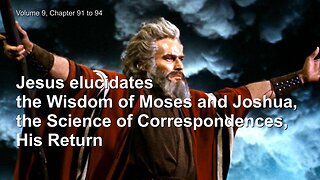 20:16
20:16
Jesus' Revelations thru Jakob Lorber English
1 year agoMoses' Wisdom, Science of Correspondences and Return of Jesus Christ ❤️ The Great Gospel of John
298 -
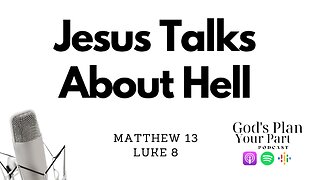 14:47
14:47
Gods Plan Your Part
7 months agoMatthew 13, Luke 8 | Unveiling Jesus' Teachings on Judgement and Hell, Parables and Stories of Faith
24 -
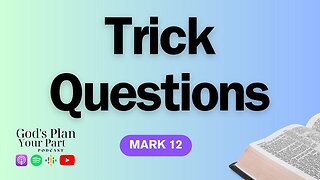 23:51
23:51
Gods Plan Your Part
2 months agoMark 12 | Jesus' Mastery Over Deceit, the Art of True Giving, and Life's Great Commandments
13 -
 9:15
9:15
Poimenchris
3 months agoUNLEASHING GOD'S WORD -MATTHEW 26
8 -
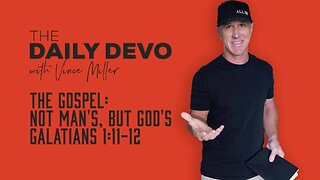 4:30
4:30
The Daily Devo by Vince Miller
3 months agoThe Gospel: Not Man's, But God's | Galatians 1:11-12
69 -
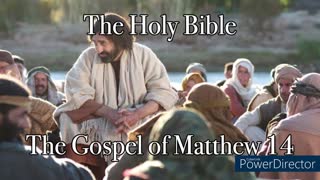 3:50
3:50
ALLTHINGSJESUSCHRIST
2 years agoThe Holy Bible - The Gospel of Matthew 14
46 -
 1:40:35
1:40:35
TheManwichShow
1 year agoManwich presents: Be Informed... Ep #3 The Commands of Jesus As Said In The Four Gospels
103 -
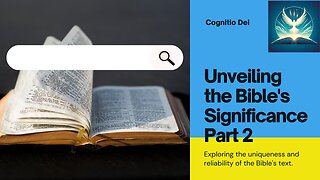 9:55
9:55
Cognitio Dei
3 months agoUnveiling the Bible's Significance: Part 2 - From Ancient Scrolls to Modern Scripture
17 -
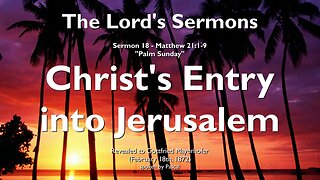 13:34
13:34
Jesus Christ reveals thru Gottfried Mayerhofer
1 year agoChrist's Entry into Jerusalem & Into the Hearts of Men ❤️ Jesus elucidates Matthew 21:1-9
91